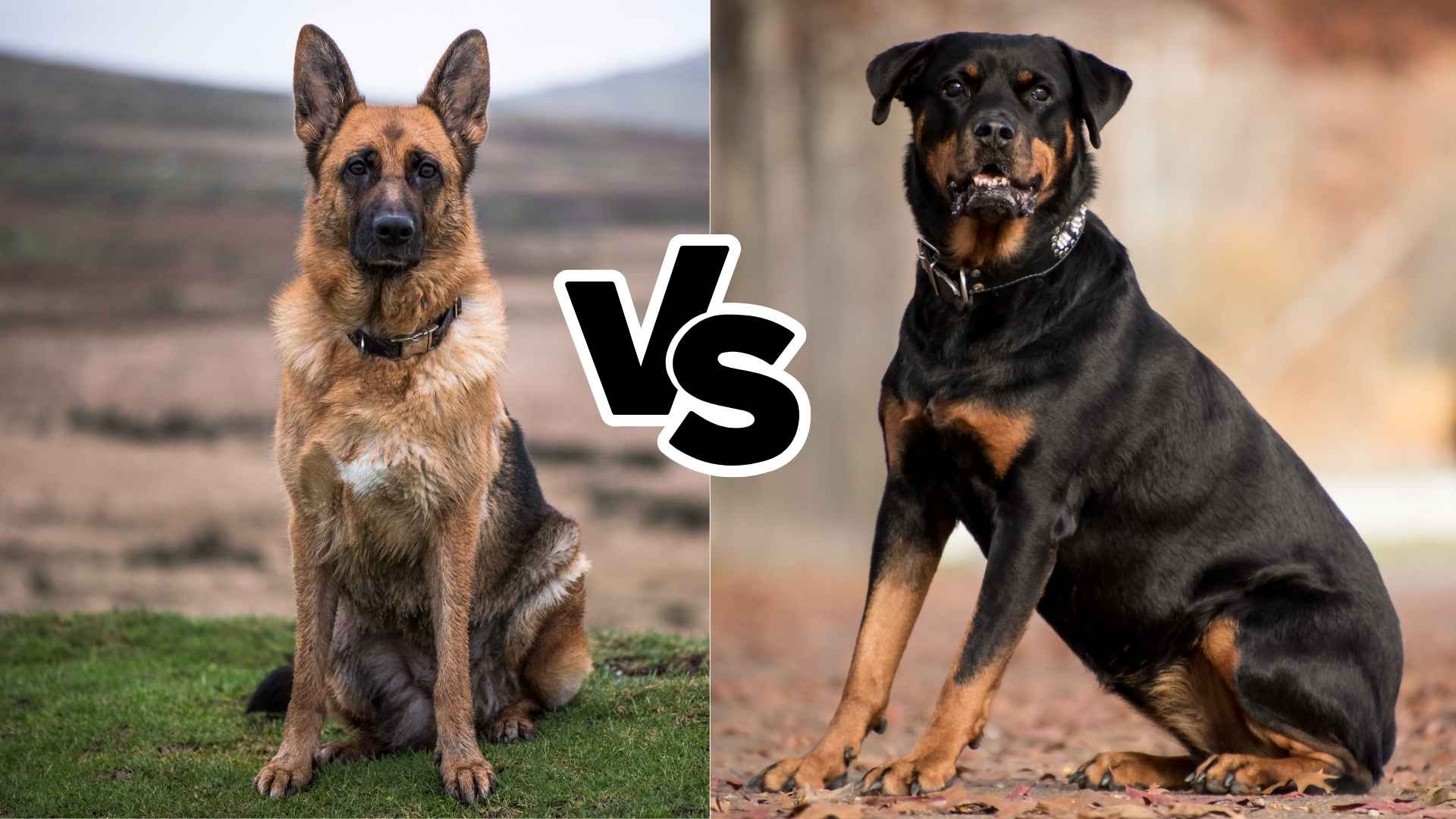Prepare yourself for the ultimate showdown: German Shepherd vs. Rottweiler. These iconic dog breeds are known for their strength, intelligence, and devotion. But before we dive into their traits, let’s explore their rich histories.
The German Shepherd hails from 19th-century Germany, bred by Captain Max von Stephanitz to create the perfect herding dog explains GSDCA. This working breed quickly evolved into a global sensation, becoming police dogs and trusted family protectors.
In contrast, the Rottweiler boasts ancient origins, descending from Roman drover dogs. These formidable animals herded cattle and guarded wealth, eventually becoming renowned as fierce, loyal companions.
Both breeds share a legacy of hard work and loyalty, earning their place as some of the most sought-after dogs today. Whether as a guardian or herders, their historical roles shape who they are—and why we admire them so much.
1. German Shepherd vs. Rottweiler: Comparison Table
| Attribute | German Shepherd | Rottweiler |
|---|---|---|
| Size | Medium to Large | Large |
| Weight | 65–90 lbs (males), 50–70 lbs (females) | 95–135 lbs (males), 80–100 lbs (females) |
| Height | 24–26 inches (males), 22–24 inches (females) | 24–27 inches (males), 22–25 inches (females) |
| Bite Force | 238 PSI | 328 PSI |
| Speed | 30 mph (top speed) | 25 mph (top speed) |
| Skills | Highly intelligent, versatile, agile | Strong, protective, dependable |
| Barking | Frequent; alert and vocal | Moderate; barks only when necessary |
| Maintenance Cost | Moderate to High ($100–$150/month) | High ($120–$180/month) |
| Grooming Cost | Moderate; frequent brushing required | Low to Moderate; minimal grooming needed |
| Breed Group | Herding Group | Working Group |
Summary:
- German Shepherds excel in agility, intelligence, and versatility, making them ideal for high-energy households or work roles like policing and herding notes PetPlan.
- Rottweilers, with their immense strength and dependability, are well-suited for guarding and protection roles.
Choose based on your lifestyle and needs!
2. Size Comparison
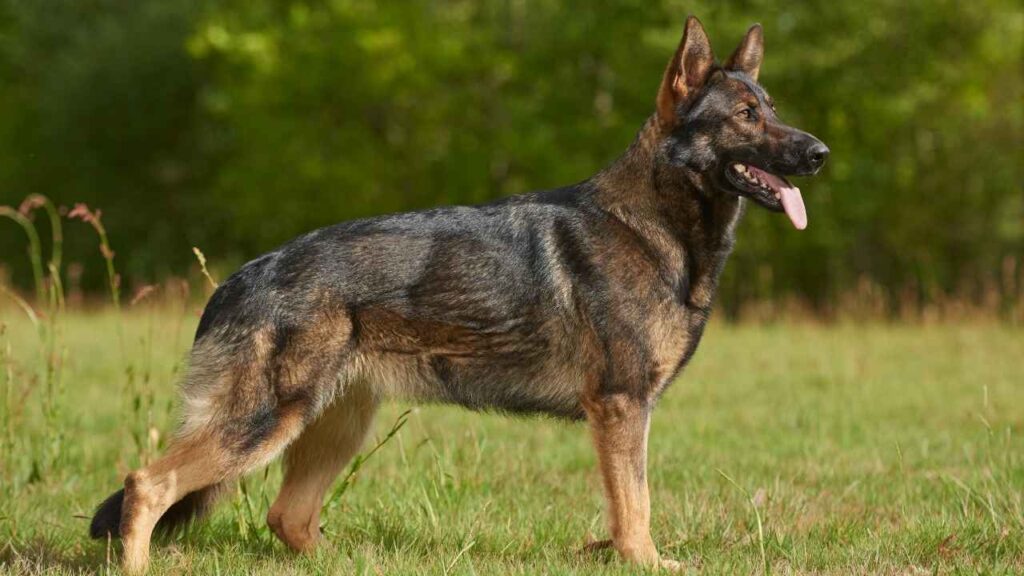
When comparing German Shepherds vs. Rottweilers in terms of size, the difference is notable. Rottweilers are the big tough dogs here, with males typically weighing 95–135 pounds and standing 24–27 inches tall. They’re hefty and muscular, and command attention with their imposing presence. Rottweilers tend to carry their weight in broad chests and powerful legs, making them appear robust and ready for action.
On the other hand, VCA mentions that German Shepherds are slightly more streamlined. Males weigh between 65–90 pounds and stand 24–26 inches tall. These dogs have an athletic build, making them agile and quick on their feet—ideal for working breeds or high-energy tasks like rescue or herding.
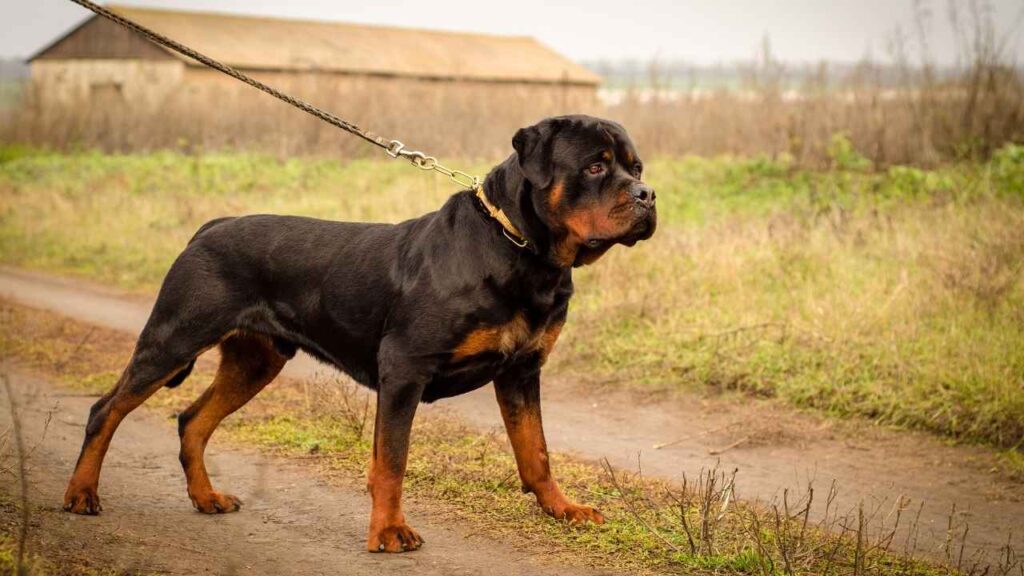
While both breeds are considered large breeds, Rottweilers often have the edge of sheer mass. However, shepherds excel in their lean and nimble frame, built for speed rather than bulk.
Whether you prefer the big dog appeal of a Rottweiler or the sleek, workhorse physique of a GSD, each breed brings something unique to the table.
3. Strength and Power
When it comes to strength and power, it’s hard to beat both Rottweilers and German Shepherds. Known as powerful dogs, Rottweilers pack a bite force of about 328 psi, making them a force to be reckoned with. This strength pairs perfectly with their guard dog instincts, ensuring they’re always ready to protect as per Hillspet.
German Shepherds aren’t far behind, boasting a bite force of around 238 psi. While their jaws may be slightly less powerful than their Rottie counterparts, their speed, agility, and versatility make them the well-trained dog of choice for tasks requiring a mix of strength and intelligence.

Both breeds thrive as service dogs, but their strengths lie in different areas. Rottweilers excel in brute strength, while German Shepherds dominate in multitasking abilities.
Ultimately, whether you need a reliable protector like the Rottweiler or the agility and adaptability of a GSD, both the Rottweiler and German Shepherd bring incredible power to the table.
4. Health Differences
When comparing health differences, both German Shepherds and Rottweilers face challenges common to large breeds. Rottweilers are prone to dilated cardiomyopathy, a heart condition that requires vigilant monitoring, along with weight gain if they’re under-exercised as mentioned by Purina.
German Shepherds, meanwhile, are highly susceptible to hip dysplasia, a genetic condition that can lead to mobility issues as they age. This makes proper care and maintaining a healthy weight essential for their well-being.
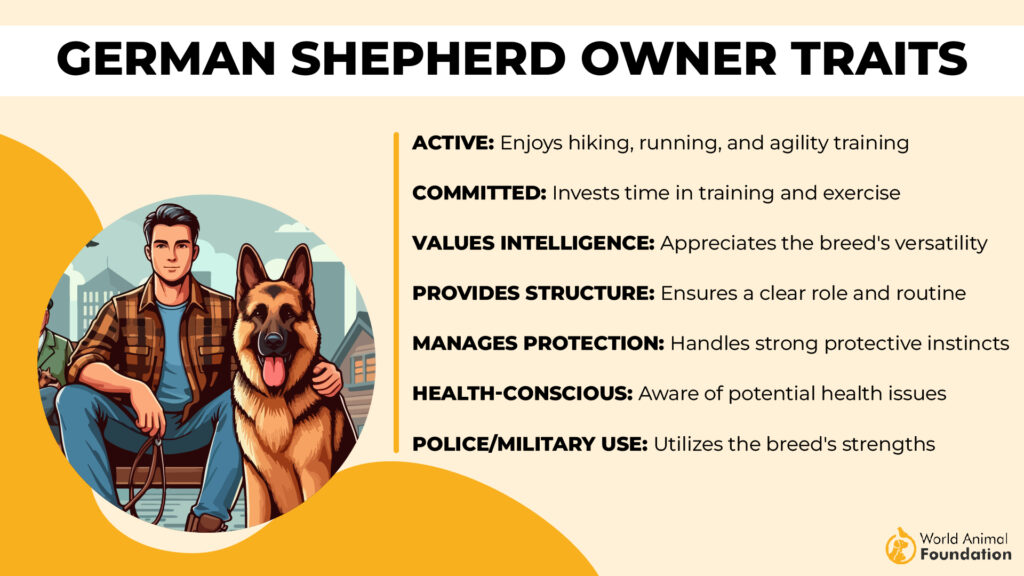
Both breeds also require a balanced diet and routine vet checkups to avoid common health issues. Without proper attention, problems like arthritis, bloating, or even cancer can develop in these two breeds.
With their extensive amount of energy and potential for health issues, owners need to stay proactive to keep their pups healthy and thriving.
4. Intelligence Levels
Intelligence is where both German Shepherds and Rottweilers shine. German Shepherds are widely regarded as one of the most highly intelligent dog breeds, often used as police dogs and service dogs. Their ability to learn commands quickly and their praise-motivated nature makes them exceptional at tasks requiring problem-solving.
Rottweilers, on the other hand, are no slouches in the smarts department. These dogs are stubborn but incredibly smart when well-trained. With the right guidance, they excel in guarding and protection roles, often impressing with their ability to think independently.

Both breeds are brilliant, but their learning styles differ. German Shepherds thrive on structured training, while Rottweilers need consistency and patience to unlock their potential.
In the debate of rottweiler vs. German shepherd, intelligence might tip the scales based on how much time you can dedicate to training.
6. Both Breeds: Temperament and Aggression
Temperament is one of the most debated aspects of the Rottweiler or German Shepherd conversation. Rottweilers are often seen as calm, loyal, and affectionate family pets when properly socialized. While their appearance might seem intimidating, they have a goofy personality around loved ones.
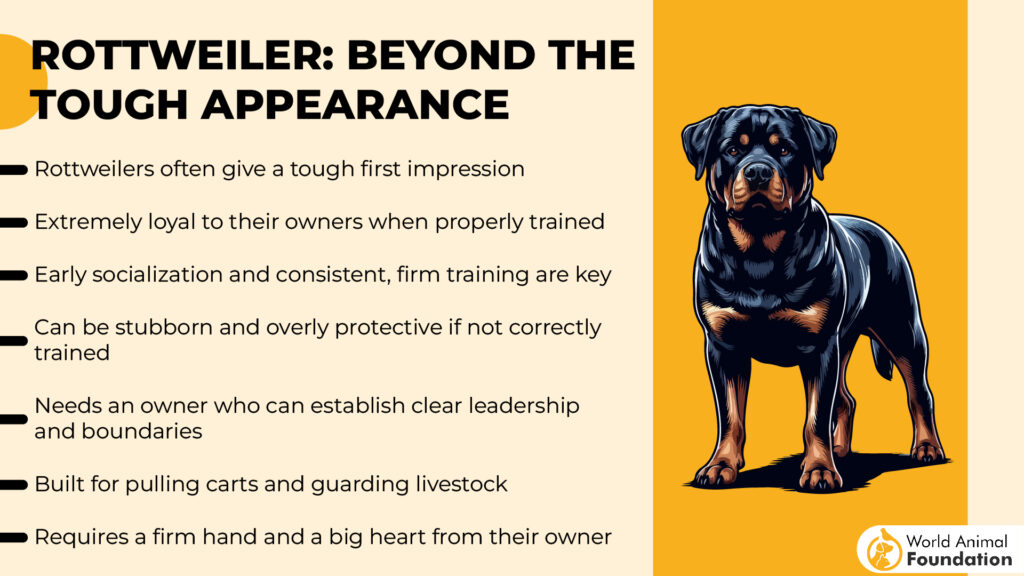
German Shepherds are more energetic and known for their easy-going but alert nature. Shepherds bond deeply with their families and are incredibly family-friendly, often serving as both protectors and playmates.
Aggression in either breed tends to stem from poor training or socialization. A well-trained dog from either breed is a joy to own, balancing affection with a strong guarding instinct.
When comparing the two breeds, their temperament differences come down to individual personalities and how they’re raised. With proper care, both can be lovely dogs for the right household.
7. Why Are German Shepherds Preferred Over Rottweilers as Police Dogs?
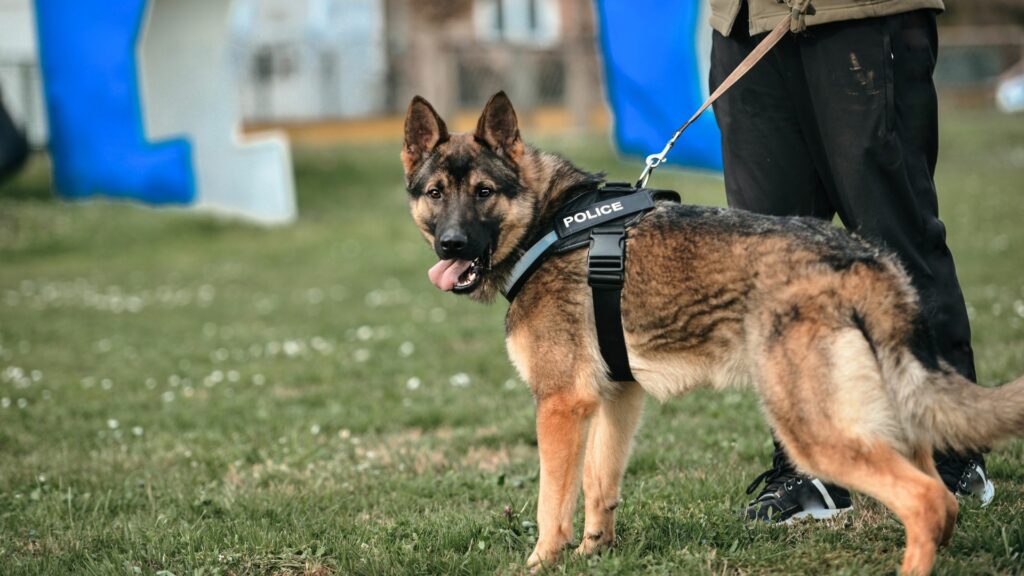
When it comes to police dogs, German Shepherds tend to dominate the field. Why? Their agility, intelligence, and energy make them perfect for demanding tasks like tracking, search and rescue, and apprehension. Their working lines are bred for stamina, focus, and an unrelenting drive to complete tasks.
Rottweilers, though powerful and protective, are less versatile in high-pressure environments. While Rotties excel in guarding and physical deterrence, their bulkier build can make them slower in activities requiring speed and agility. Additionally, their life expectancy and tendency to become under-exercised in inactive roles may not align with the dynamic needs of police work.
Shepherds also bond easily with their handlers and are highly trainable. Their natural grooming needs are manageable for professionals who need dogs ready for work in all environments, from urban streets to rugged terrain.
Though both breeds are brilliant working breeds, the primary goals of police work—speed, intelligence, and multitasking—often make the German Shepherd the preferred choice.
8. German Shepherd or Rottweiler: Which Is the Right Dog for You?
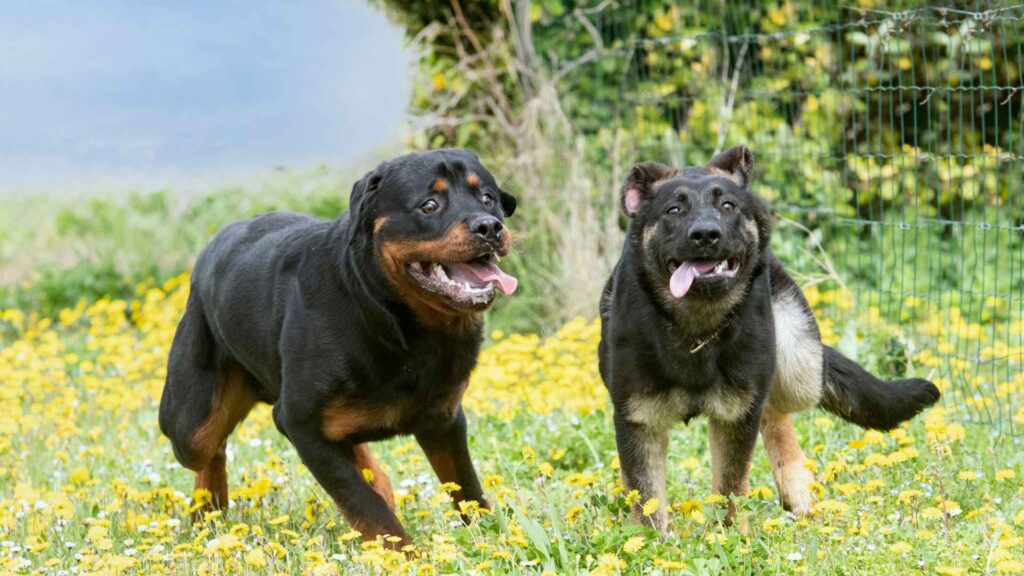
Choosing between a German Shepherd or a Rottweiler can be tough, as both breeds are loyal, protective, and incredible companions. Your choice should depend on your lifestyle and expectations.
If you’re looking for a dog with more energy to join your active lifestyle, German Shepherds are an excellent match. They thrive on activity, excel in training, and adapt well to busy households or as family pets. However, their shedding requires consistent grooming to keep your house clean.
Rottweilers, on the other hand, are ideal if you prefer a dog with a calm, steadfast demeanor. They’re less high-strung and tend to bark less, making them great for quieter homes. While they have lower grooming needs, their strength and size mean you’ll need a firm hand on the leash and early socialization to curb potential aggression.
In the debate of rottweiler vs. German shepherd, consider your living situation, time for training, and whether you’re drawn to the sleek energy of a shepherd or the steady presence of a Rottie. Either way, you’ll have a reliable protector and a lifelong companion.
Conclusion
In the grand debate of German Shepherd vs. Rottweiler, there’s no clear winner—just two incredibly similar breeds with unique strengths. Whether you’re drawn to the agile, intelligent shepherd or the loyal, powerhouse rottie, both are exceptional animals that thrive with love, care, and proper training.
Their two primary goals—being loyal protectors and loving companions—make them stand out among all dog breeds. With the right food, exercise, and guidance, they grow into wonderful additions to any family.
Whether you’re welcoming a puppy from reputable breeders or considering adoption, remember that a well-trained dog is never aggressive, but always affectionate, reliable, and ready to stand by your side.


